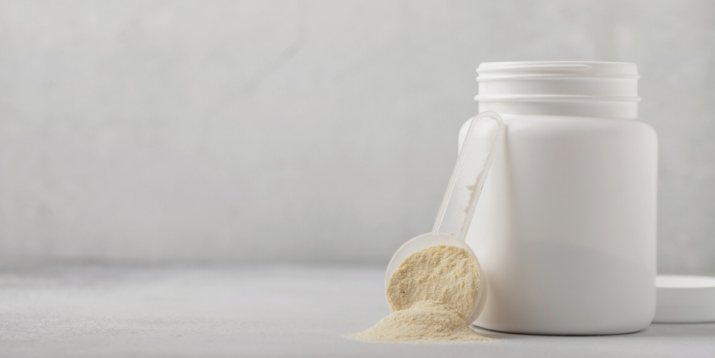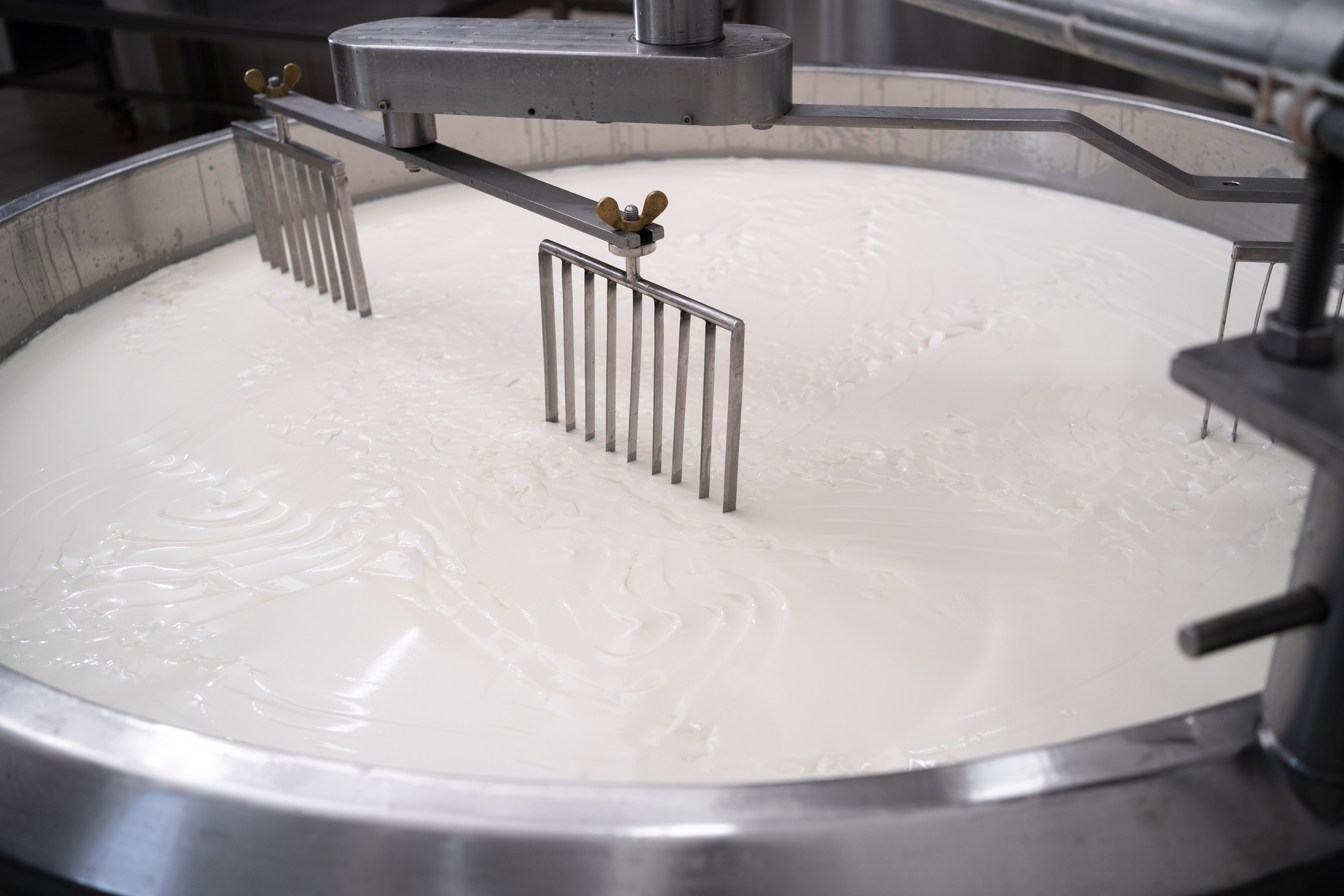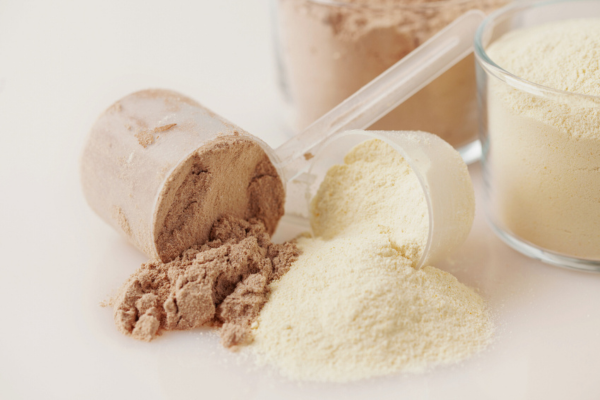Casein Protein: Whey’s Muscle-Building Nutritional Cousin

Walk into any health and nutrition store and you’ll see shelf upon shelf of whey protein — and not without good reason. But that doesn’t mean you should overlook whey’s unassuming counterpart, casein protein.
So what exactly is casein, and how can casein protein powder benefit those looking to recover from a hard workout and build muscle? We’re glad we asked on your behalf!*
What Is Casein?

Casein is one of two proteins found in milk. The other is whey.
When milk is drained of its whey-rich liquid, what’s left are curds, which contain casein. This can be an end product in itself — i.e., cottage cheese — or the first step in the process of making other cheeses.
“About 80 percent of a dairy cow’s milk protein is casein while the other 20 percent of the protein is whey,” says Jonathan Valdez, RDN, CPT, and owner of Genki Nutrition.
Owing to its consistency, casein has also been added to some food products in recent years to help them whip, foam, and thicken better.
Casein Vs. Whey
Instead of pitting whey and casein against one another, it’s best to see them as separate proteins that work in their own unique ways. They’re similar on some counts, but distinctly different on others.
Nutrition
Depending on the brand of protein you buy — and whether or not other ingredients are added — casein and whey are fairly identical in their calorie, fat, and protein content.
And, compared to most plant proteins, casein and whey are complete proteins with the highest protein digestibility rating (PDCAAS).
Being complete proteins, casein and whey contain sufficient quantities of the nine essential amino acids, so called because we can’t produce them on our own and therefore must consume them in food.
Effectiveness
In a study that pitted whey and casein head to head, both yielded statistically significant strength gains and improved performance in power and agility tests. The same study found no major differences in the performance-enhancing effects between the two supplements.
“Although, separately, they have benefits,” Valdez says, “They work best together in order to improve performance. Collectively, they both appear to improve strength and body composition.”*
Absorption
One of the major differences between whey and casein is how fast we digest them.
“Casein is considered slow-digesting, meaning that absorption in the gut and transport to active tissues is a little slower and sustained compared to other fast-acting proteins,” says Brittany Allman, certified strength and conditioning specialist and C.I.S.S.N.
Whey, on the other hand, doesn’t waste any time.
“Whey, which is acid soluble, is digested and absorbed quickly, which is why it’s commonly prescribed for post-workout,” says Francis Stephens, Ph.D., BODi scientific advisor, and associate professor of metabolic and molecular physiology at the University of Nottingham.
The body digests casein more slowly because it’s water insoluble and coagulates — or curdles — when it comes into contact with water. (Hence Little Miss Muffet’s curds and whey.)
Types of Casein Protein

Casein primarily comes in two forms.
Micellar casein
Micellar casein is the purest form of casein, and is generally regarded as the most effective. That’s why it’s the type of casein found in Beachbody Performance Recover.
Hydrolyzed casein
Hydrolyzed casein protein is a more processed form of micellar casein but doesn’t boast the same slow-digesting benefits. Allman explains that hydrolysis actually makes this type of casein perform similarly to whey.
Benefits of Casein
1. It can help build muscle
Research suggests casein can help promote muscle hypertrophy (growth). In the study, subjects found their muscle size improved over a 10-week period that included resistance training.*
2. It can help improve strength, power, and agility
A study focusing on college-age female athletes found that when those athletes supplemented resistance training with casein, it led to “significant changes in performance and body composition.”*
3. It may help reduce body fat
Chugging protein shakes to lose weight and then sitting on the couch won’t positively move the scale, but pairing protein supplements with strength training may help you lose fat as you gain muscle.
In the above study, participants experienced a significant decrease in body fat over the course of the eight-week strength training and supplementation period.*
When and How to Take Casein

While it’s best to consume whey protein in the hour before or immediately after a workout, Valdez says, it’s a good idea to take casein protein before bed because it digests slowly.
Allman agrees, recommending a 20- to 40-gram dose before turning in.
“If you don’t have casein protein powder on hand, there are some whole foods that are high in casein content, as well,” Allman says.
A glass of milk won’t give you the same 30-gram dose of casein you can get from a protein powder, but you’ll still get some of the slow-digesting protein. Another great, tasty option is 2 percent cottage cheese, which has far more protein than milk (about 24 grams per cup), the vast majority of which is casein protein.
*These statements have not been evaluated by the Food and Drug Administration. This product is not intended to diagnose, treat, cure, or prevent any disease.
